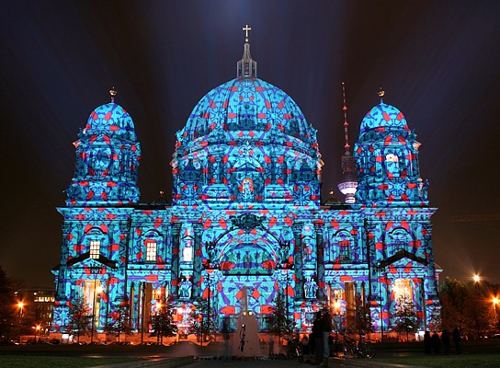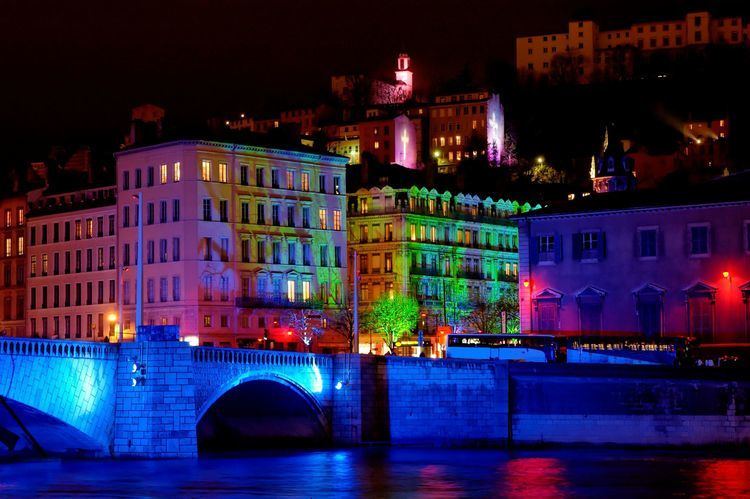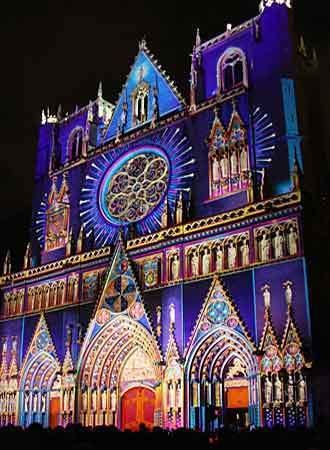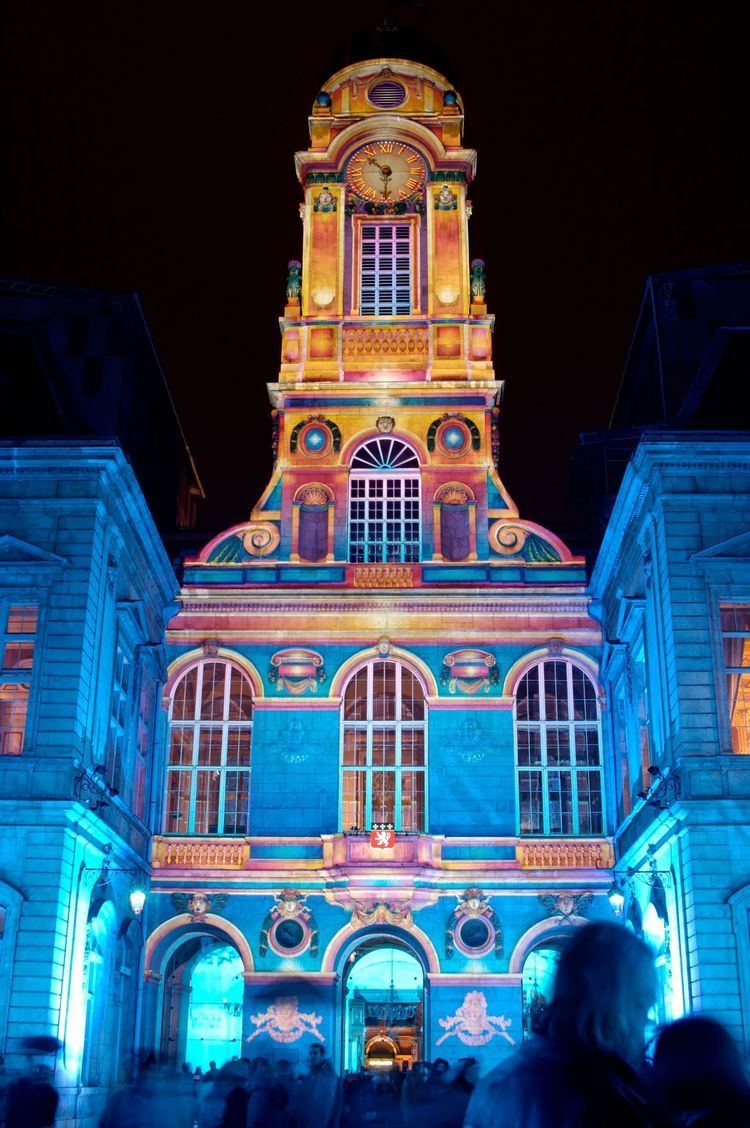2016 date 8–10 December 2016 | Date Around December 8th Frequency annual | |
 | ||
Observances Candles at windows, light shows in public and historic buildings Similar Lyon Cathedral, Fourvière, Basilica of Notre‑Dame de Fourvi, Place des Terreaux, Vieux Lyon | ||
Festival of lights lyon 2013 mapping
The Festival of Lights (French: Fête des lumières) in Lyon, France expresses gratitude toward Mary, mother of Jesus around December 8th of each year. This uniquely Lyonnaise tradition dictates that every house place candles along the outsides of all the windows to produce a spectacular effect throughout the streets. The festival includes other activities based on light and usually lasts four days, with the peak of activity occurring on the 8th. The two main focal points of activity are typically the Basilica of Fourvière which is lit up in different colours, and the Place des Terreaux, which hosts a different light show each year.
Contents
- Festival of lights lyon 2013 mapping
- December 8 festival of lights lyon
- Spared from plague
- Inauguration of a statue
- Today
- Changes in 2015 and 2016
- References

December 8 festival of lights lyon
Spared from plague

The origins of the festival date to 1643 when Lyon was struck by plague. On September 8, 1643 the municipal councillors (échevins) promised to pay tribute to Mary if the town was spared. Ever since, a solemn procession makes its way to the Basilica of Fourvière on 8 December (the feast of the Immaculate Conception) to light candles and give offerings in the name of Mary. In part, the event thus commemorates the day Lyon was consecrated to the Virgin Mary.
Inauguration of a statue
In 1852, it became a popular festival when a statue of the Virgin Mary was erected next to the Basilica, overlooking the city. Now a focal point of the festival, the statue was created by the renowned sculptor Joseph-Hugues Fabisch and was sponsored by several notable Lyonnais Catholics. It was then accepted by Maurice Cardinal de Bonald in 1850. The inauguration of the statue was due to take place on September 8, 1852, the day of celebration of the Nativity of the Virgin. However, the flooding of the Saône prevented the statue from being ready. The archbishop, with the agreement of a committee of lay people, therefore chose to move the date back to the 8 December.

By 1852 in Lyon, December 8 had already been a celebration for the Immaculate Conception of the Virgin. Leading up to the inauguration, everything was in place for the festivities: The statue was lit up with flares, fireworks were readied for launching from the top of Fourvière Hill and marching bands were set to play in the streets. The prominent Catholics of the time suggested lighting up the façades of their homes as was traditionally done for major events such as royal processions and military victories.

However, on the morning of the big day, a storm struck Lyon. The master of ceremonies hastily decided to cancel everything and to push back the celebrations once more to the following Sunday. In the end the skies cleared and the people of Lyon, who had been eagerly anticipating the event, spontaneously lit up their windows, descended into the streets and lit flares to illuminate the new statue and the Chapel of Notre-Dame-de-Fourvière, later superseded by the Basilica. The people sang songs and cried "Vive Marie!" until late in the night. This celebration was then repeated from year to year.
Today

Thus, tradition now dictates that every family in Lyon keep, along with its Christmas decorations, a collection of stained or clear glass in which candles are burnt on windowsills on 8 December. These stout, fluted candles can be found in shops towards the end of November.
Nowadays, the city council puts on professionally run performances. The people of Lyon's participation remains strong as evidenced by numerous façades lit up in the traditional way and by the throngs of people wandering the streets on 8 December.
Historians and sociologists note the rather misinformed notions that the people of Lyon have concerning the celebration's origins: confusion over the thanks given to Mary, as well as the dates involved, leads people to think the celebration commemorates the establishment of the Basilica of Notre-Dame de Fourvière or a wish granted after a plague supposedly struck in the 19th century.
Nowadays, the festival draws 3 to 4 million people each year.
Changes in 2015 and 2016
In 2015, the festival was scaled back, owing to the nationwide state of emergency banning large assemblies in the wake of the November 13 attacks in Paris. The festival was limited to the traditional lumignon candles and an installation which paid tribute to the victims of the terrorist attacks, whose first names were displayed over the buildings of the quays.
Because of the continuing risk of attacks, the 2016 edition of the festival will take place in a smaller area than usual and will last for three days instead of four. Security inspections will be conducted at entrances to the event.
